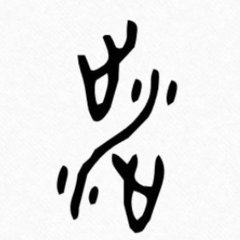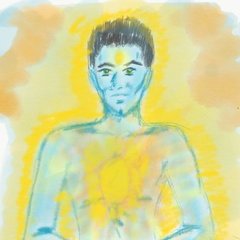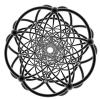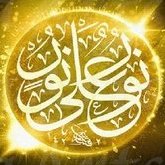Search the Community
Showing results for 'Dream'.
Found 7,590 results
-
why can’t you walk through the wall in your dream- do you have repressed wall traumas?
-
you guys are so funny with this 'walk through the tree a reality test' business.;) i can walk through air - is air unreal? a radio-wave goes right through the tree - is the tree unreal? i cannot walk through a wall in my dream - is the wall real? hehe;)
-
I'm looking for a solution to a problem posed by the 'unreal' position in Buddhism, where we are often encouraged to view the world as like a dream or a magic display etc. I find this unsatisfactory although I understand the basis for it. In my view the tree is a real tree as distinct to an imaginary tree - this distinction is perhaps magnified by the modern tendency towards 'fantasy' and the the like and the preference for the imaginary digital world over the substantial 'real' existence - even though the latter may at time be dull and uninspirational. I appreciate that perception is far from the simple camera lens analogy which we sometimes use. Much of what we call perception is interpretation by our brains using a world model built from both our indivaidual experience and encoded experience from millions of years of evolution. In that sense we carry a world in our heads which forms the basis for each actual incidence of seeing. But that doesn't remove the question of whether the observed is real - is the tree real and what distinguishes from an unreal tree. I am not sure about the 'bicameral mind' which I believe has received some criticism in recent years. But I am sure that early man was much more open to what Blake would call imaginative vision. Angels in trees and wotnot. We used to have an access to reality which surpassed what our narrow minds will now let us see. I am sure of this. Well there are plenty of stories of people doing exactly that kind of thing. Miracles as they are called in the Bible or, for example yogis putting their foot and hand prints in solid rock. If a great mystic came and wolked through my tree I don't think this would make it any less real. I just think that this would tell us something about the fundamental nature of the real - something we previously did not understand.
-
Because trying to step through it will fail, unlike eg in a dream where you can step through a tree. Reality obeys laws that are independent of how we constructed the tree-object inside our minds.
-

I started meditating to relax and I ended up sobbing with rage - am I stange?
Bindi replied to Apech's topic in General Discussion
What’s fundamentally wrong with feeling? Why is having an emotion referred to negatively as clinging, or rebranded as sluggish qi? Emotion is a *legitimate tool to help us make appropriate decisions. The beauty of they system goes wrong IMO because of stored emotions and the isolation of our emotions from our logical thought processes, but this common error can be fixed, and the first step is releasing stored ie. unexpressed emotions. But how to do that? If you’re trying to force any sort of prejudice on an emotion, that you don’t want to cling, that it can just be observed, that you don’t want to become lost in emotion, that it’s not a legitimate emotion, then you’re limiting the simplicity of emotions. A feeling is felt, end of story. Stored emotions have to be felt, they were created in the language of feeling, and they have to be expressed in the language of feeling, there is no alternative. Granted it’s a rocky road, and people thrown into the deep end are being damaged, but then the method for clearing stored emotions needs to be blamed as inappropriate. I propose that a primary purpose of dreams is to clear stored emotions as a self-cleaning self-fixing system, much like our bodies self-fix a wound. I contend that we are self-fixing organisms on both the physical and psychological level, and dreams are the expression of psychological fixing. In a dream commonly there is a feeling. This is the purpose of the dream, dredging up an irritant in the psyche in order to remove it, and the way to remove it is to fully feel it within the dreams boundaries. This is also the safety mechanism of the self-fixing system, our psyche doesn’t want to destroy itself, it wants to fix itself. Going at it and expressing feelings in an unboundaried way is an unbalanced start that is more than likely to end in unboundaried and unbalanced ways, maybe this is why so many restrictions are put on emotions, they can destroy an individual who has lost contact with their own internal cleaning system. Dreams contain more than that single level of information, but decoding the other levels is harder, and feeling the feeling is enough information on the first run. * One example of the use of emotions for making good decisions that has been known for decades: Would it really be in our best interests to detach from this feeling and keep heading merrily in the direction of the snake? -
This is a great question for investigation. What does "real" feel like? What is the basis for designation of "real"? What would an illusory tree feel like? How should a tree feel if it wasn't real? The other day, I was touching a mirror with my fingers as a dream state reality check. It was reflective, resistant to my fingers, smooth, and solid to the touch. I tried to push my finger through it, but it didn't budge. It felt like many mirrors I had touched over the course of my life. But in this case, I was dreaming. Sat/asat is usually used in the way we use "real" and "unreal" in my experience.
-
Not a part, an appearance in the nondual reality. Every thing is. Always. Think of any dream you’ve ever had. There is an entire universe that appears in it. Even you appear as a character in the dream. With a dream body, and a dream mind, doing dream things. Is there a separate dualistic “you” and a “dualistic universe” in your consciousness? Yes. It is very much dualistic. You interact with things, feel emotions, act, react. But all of it is happening in your consciousness alone. You forget that you are the dreamer, and are deeply engrossed in the dream universe, living your dream life, experiencing your dream experiences. Where is the dualistic dream “you” when you wake up? Now if you become lucid in this dream. You now know that you are actually a dreamer - this is the recognition. There was never a moment you were not that - that is like your nondual true nature. But you are also the dream character. That is your dualistic appearance in your nondual true nature.
-
Been practicing eight pieces of silk almost daily for a few years now, also standing on and off. lately been standing most days, some days I don't have a chiropractor and acupuncturist who I believe are probably fixing up whatever problems there are with my practice. they and my practice helped me recover from a chronic pain disorder i reinflamed my body by overworking at an art project, currently reevaluating whether digital visual arts are worth it for me. they are bad for my body, there's just less positional options for drawing a line if you are using digital tools, whereas with traditional mediums you van adjust your body much much more. I work with kids, if i didnt do this stuff I'd go insane at them and lose my job. I live for the arts, it's like my mission. currently not drawing for a week while my body heals. I really fucking love standing meditation. just beend doing the one with the arms dropped down Oh I also keep a dream diary, feel connected to God through them sometimes. after waking i contemplate the dreams sometimes and have a vision of a painting with much of the imagery from the dream, it helps me understand it. i compose the thing in the morning. I want to make these paintings and share them and apart from physical practices I been reading ursula le guin's literature while also looking at her dao de jing rendition. it's nice
-
You didn't give a source, on your quote. As to "born to the rulers of the Sakyan clan": I know that while my father, the Sakyan, was ploughing, and I was sitting in the cool shade of a rose-apple tree, aloof from pleasures of the senses, aloof from unskilled states of mind, I entered on the first meditation, which is accompanied by initial thought and discursive thought, is born of aloofness, and is rapturous and joyful, and while abiding therein, I thought: ‘Now could this be a way to awakening?’ Then, following on my mindfulness, Aggivissana, there was the consciousness: This is itself the Way to awakening. This occurred to me, Aggivissana: ‘Now, am I afraid of that happiness which is happiness apart from sense-pleasures, apart from unskilled states of mind?’ This occurred to me…: I am not afraid of that happiness which is happiness apart from sense-pleasures, apart from unskilled states of mind.’ (MN 1 246-247, Pali Text Society Vol I pg 301) I'm thinking the rulers of the Sakyan clan didn't plow fields much, and Gautama was therefore probably not born to a ruler of the Sakyan clan. His aunt raised him, as his mother died at childbirth. Can't give a source on that, but I think it's commonly accepted. It was his aunt who, many years later, appealed to Gautama to admit woman to the order--or rather, Gautama's attendant Ananda appealed to Gautama on her behalf. Three times Ananda asked, and on the third Gautama relented and admitted them, warning that it would shorten the life of the Order from a thousand to five hundred years ("The Gotamid", Pali Text Society AN vol IV p181) One of the most amazing events in the history of Buddhism was the first schism, when the order of monks couldn't agree on whether or not an arahant (an enlightened individual) could have a wet dream (could be seduced by a Succubus, in their sleep). I believe that split was the beginning of the distinction between Theravadin and Mahayanin traditions (this from "Indian Buddhism", by A. K. Warder). A strange religion getting stranger. Gautama put forward a way of living that he said was: … something peaceful and choice, something perfect in itself, and a pleasant way of living too. (SN V 320-322, Pali Text Society SN V p 285) That way of living, Gautama said, was his way of living both before and after enlightenment. The fact that he recommended a way of living that could be realized without enlightenment gets lost, in all the hullabaloo about enlightenment. A favorite passage from the Pali sermons: But when walking along the highway, Nagita, I see nothing whatever in front nor behind, it suits me, even over the calls of nature. (AN VI, IV 42 Pali Text Society vol 3 p 243) Buddhism is a strange religion!
-
so what some don't get imo is that unconditionally throwing out all the babies with the bathwater is also a form of being or having a spiritually destructive and obedient (dis) belief. btw Spirit will try and use any form as a vehicle to get through our thick skulls, evil will try to do the same with any form to corrupt and destroy... btw I'd say that what is REAL in the vastness of all the upper, middle and lower astral realms or dimension's and or "dream time" worlds does not lend itself well to what is only known and understandable per human intellectual reasoning...thus being able to step off a "hundred foot pole" would at least be problematic!
-
I had a dream where I met someone resembling a guy I used to be pals with back in the uni. In the dream we were is a sort of warehouse, and there he casually jumped off the rafters that were above head height, and I confessed I was wary of doing that, since I have pains and problems with my knees. Than someone else joined in -- and I told them about a cutting pains I have, running down the line from my upper jaw down to the neck and right chest area and to the liver I think? I pulled on it and a sort of a worm came out, or that was the concept I was trying to convey, and they sort of rolled their eyes and went with it - yeah, it's sort of like that. So the worm got tossed out, and they extended palms toward me, I felt warmth. Some unfamiliar music was playing, 5 clean tones played in a loop on a string instrument and two chords on a different string instrument. So the cutting pains have stopped, and the painful swollen lymph nodule I had on the underside of the jaw is gone. I could remember the melody for a while after waking up, but I am not trained in writing down music, so it is gradually drowned out. He had a set of prayer beads with him at times, and more sensitive than most of us were, so he often took his time before speaking, and at times when you got fired up or angry guy would just snicker at you, and you felt like a dolt. I wonder how is he? Didn't hear from him in years.
- 1 reply
-
- 7
-

-
Greetings all. I would like some advice and insight on something which happened to me last night/this morning. I was dreaming that I was repeatedly reciting a Sanskrit mantra. There were no visuals accompanying the sounds, only the mantra, entering my mind, and then me reciting it. As I started to wake from the dream, I was actually reciting the mantra out loud and kept repeating it. When I was fully awake I felt incredible. Is there a reason for this ? Am I being subconsciously prompted to follow a certain path ? A sign from God ? It's still so fresh in my mind which is also unusual as dreams tend to dissipate as time passes.
-
Thank you everyone for your answers. Much appreciated. Are form corrections more suited for one on one sessions? Or do you make these in the group sessions as well? I just assumed that wasn’t possible in a group zoom session. It would be cool if you visited my dream, though I understand you are a busy man, with better things to do than entertain me while I sleep. The comment from the real you about expectations is much more uplifting than the one from my projected Terry Dunn - very, very nice to hear!
-
Yes, its that strange world of half dream , half awake . Love unrequited, robs me of me rest, Love, hopeless love, my ardent soul encumbers, Love, nightmare like, lies heavy of me chest, And weaves itself into my midnight slumbers. When you're lying awake with a dismal headache and Repose is taboo'd by anxiety, I conceive you may use any language you choose to Indulge in, without impropriety; For your brain is on fire, the bed-clothes conspire of Usual slumber to plunder you: First your counter-pane goes, and uncovers your toes, And your sheet slips demurely from under you; Then the blanketing tickles, you feel like mixed Pickles, so terribly sharp is the pricking, And you're hot and you're cross, and you tumble and Toss 'til there's nothing 'twixt you and the ticking. Then the bed-clothes all creep to the ground in a heap And you pick 'em all up in a tangle; Next your pillow resigns and politely declines to Remain at it's usual angle! Well, you get some repose in the form of a dose, with Hot eye-balls and head ever aching, But your slumbering teems with such horrible dreams That you'd very much better be waking; For you dream you are crossing the channel, and Tossing about in a steamer from harwich, Which is something between a large bathing machine and A very small second class carriage, And you're giving a treat (penny ice and cold meat) to A party of friends and relations, They're a ravenous horde, and they all come on board At sloane square and south kensington stations. And bound on that journey you find your attorney (who started this morning from devon); He's a bit undersiz'd and you don't feel surpris'd When he tells you he's only eleven. Well you're driving like mad with this singular lad (by the bye the ship's now a four wheeler), And you're playing round games, and he calls you bad Names when you tell him that "ties pay the dealer"; But this you can't stand so you throw up your hand, And you find you're as cold as an icicle; In your shirt and your socks (the black silk with gold clocks) Crossing sal'sbury plain on a bicycle: And he and the crew are on bicycles too, which they've Somehow or other invested in, And he's telling the tars all the particulars of a Company he's interested in; It's a scheme of devices, to get at low prices, all Good from cough mixtures to cables (which tickled the sailors), by treating retailers as Though they were all vegetables; You get a good spadesman to plant a small tradesman (first take off his boots with a boot tree), And his legs will take root, and his fingers will Shoot, and they'll blossom and bud like a fruit tree; From the green grocer tree you get grapes and green Pea, cauliflower, pine apple and cranberries, While the pastry cook plant cherry brandy will grant, Apple puffs, and three corners, and banburys; The shares are a penny and ever so many are taken by Rothschild and baring, And just as a few are allotted to you, you awake And with a shudder despairing You're a regular wreck, with a crick in your neck, and No wonder you snore, for your head's on the floor And you've needles and pins from your soles to your Shins, and your flesh is acreep, for your left leg's asleep, And you've cramp in your toes, and a fly on your nose, And some fluff in your lung, and a feverish tongue, And a thirst that's intense, And a general sense that you haven't been sleeping in clover; But the darkness has pass'd, and it's daylight at Last, and the night has been long, ditto, ditto my song, And thank goodness they're both of them over!
-
Whether 'tis nobler in the mind to suffer The buckets and spades of outrageous fortune, Or to take a quick trip to the pub And by opposing her then. To die—to peep, No more; and by peep to say we end up at Suzie's lunch time strip show The heart-ache and the thousand natural shocks That flesh is heir to: 'tis a consummation Devoutly to be wish'd. To drink, to dream To sleep, perchance to dream... of Suzie—ay, there's the rub: One hopes ! For in my snooze what dreams may come, When we have raked this garden path Must give us pause—there's the respect That makes calamity of so long life. For who would bear the words and scorns of wife , Th'oppressor's wrong, the proud man's contumely, The pangs of dispriz'd love, the law's delay, The insolence of office, and the spurns That patient merit of th'unworthy takes, When he himself might his quietus make With a bare bodkin? Who would fardels bear, To grunt and sweat under a weary life, and Sunday is the only day off I get to do this But that the dread of something after the weekend, The undiscovere'd country, from whose booze No traveller returns, puzzles the will, And makes us rather bear those ills we have Than fly to others that we know not of? So best to take a cruise ship Thus conscience doth make cowards of us all, And thus the native hue of resolution Is sicklied o'er with the pale cast of thought, And enterprises of great pith and moment With this regard their currents turn awry And lose the name of action. Or should non action be my course It would , but this pain in lower abdomen and pressure begs ask to awakane or not for 'tis a matter of To pee, or not to pee, that is the question.
-
... and by a sleep to say we end The heartache, and the thousand natural shocks That flesh is heir to. ’tis a consummation Devoutly to be wish’d.... To sleep—perchance to dream. Ay, there’s the rub! For what if, in that dream, the very chair we sit upon in sleep, falleth over... (Hamlet, appended)
-
Hi guys, I’ve been doing the exercises from DVD 1 for five months for about an hour a day, everyday. A lot of that has been exclusively monk holding the pearl and monk gazing at the moon. I’m not quite sure I’m feeling the benefits that are listed in here. I’m wondering if I could get some input on what I could do to troubleshoot? My guess is to seek out a teacher in person. But if that’s the case, can I find any in Europe? Or is my best bet to save up for a trip to see Terry himself? I did have a dream where Terry sat on a swing and explained I might have too high expectations for the practice - so maybe it’s just that.
-
I remember that book. Many years back , I read it with some naive excitement . I never guessed back then that I would find myself working a form of alchemy and producing 'elixirs and stones' for the Aussie BD agricultural market . I have retired from that now though . I'll offer this to you as you might find it interesting , it covers a similar area to The Elixir and the Stone ( being ; " an alternative history of the intellectual world. Perhaps for the first time it puts into their true context those shadowy alchemists and magicians who have haunted the imaginations of people for centuries. " ... as the critics said of it ) , but this IMO tops it - I think its rather essential reading to get a grip on the tradition ; Patrick Harpur , 'The Philosopher's Secret Fire - A History of the Imagination ' " The visionary tradition of spirits, gods, and demons continues to subvert our rational universe, erupting from the shadows in times of intense religious and philosophical transition. In this dazzling history, Patrick Harpur links together fields as far apart as Greek philosophy and depth psychology, Renaissance magic and tribal ritual, Romantic poetry and the ecstasy of the shaman, to trace how societies have used myths to make sense of the world. ... ... Patrick Harpur is an acclaimed author, best known for his philosophical works, which include The Philosophers' Secret Fire: A History Of The Imagination and Mercurius: The Marriage Of Heaven and Earth , the latter of which, after being out of print for several years (and fetching a small fortune on auction sites like eBay) has finally been re-released in a paperback edition. ' ( - Damn .... I got an old copy of 'Mercurius' sitting in a book box in the shed ... looks like I just missed out on a 'small fortune' . ) I also recommend his 'Daimonic Reality' . [ " Lake monsters, Yetis, UFOs, crop circles, guardian angels and visions of the Virgin Mary can all be described as apparitions, and this book weaves together an account of them. It argues that only in the last three centuries or so, and only in Western culture, they're as lively as ever. But, the author suggests, they can be made intelligible again by appealing to a different world-view. Three of the chief models for understanding mind and world are Jung's "Collective World", which is used to illuminate the links between the apparently disparate experiences being dealt with." ] ... where the author is coming from : ' In his book, Daimonic Reality, Harpur argues that the human psyche extends beyond the confines of the physical human body, and that it may in fact be a part of our reality. He also notes that during most of human history, civilization has had another, "shadow reality" of folklore, except the current society which is strongly attached to the material. The following is a quotation from Daimonic Reality: Hitherto, I have taken "soul" to refer to two distinct, but unrelated, images. Firstly, soul is synonymous with the daimonic realm itself, the realm of Imagination, and is really an abbreviation for the collective Anima Mundi, or World-Soul. Secondly, soul refers to whatever images the World-Soul itself uses to represent itself. Archetypally, this image is usually feminine and appears, for example, as a female daimon or goddess who, as Jung would say, "personifies the collective unconscious." Now the third use of "soul" refers to the image by which we, as individuals, are represented in the World-Soul. Traditional views of human nature have always allowed for (at least) two "souls" of the latter kind. In ancient Egypt, for instance, they were known as the ka and the ba; in China, hun and p'o. One of these souls inhabits the body and is the equivalent of what, faute de mieux, we call the ego. I will call it the rational ego to distinguish it from the second soul, variously called, in other cultures, the shadow-soul, ghost-soul, death-soul, image-soul and dream-soul, for which our culture has either the word "soul" or else no word, because it is not generally believed to exist. However, it does exist and can be thought of as an ego, in the sense that it confers identity and individuality. It enables us, that is - like the rational ego - to say "I." But it is an ego, not of consciousness, but of the unconscious; not a waking, but a dream ego; not a rational ego, but an irrational ego. I will call it the daimonic ego. Like the rational ego, it has a body - not a physical one but a dream-body, a "subtle" body such as daimons are imagined as having, an "astral" body as some esoteric doctrines say: in short, a daimonic body. " - Wikipedia
-
Dear Dao Bums, An update! Last night I did the bön visualisation before sleep, and whenever I woke up to turn over during the night.... Nothing!!! Until the morning hours, finally, something happened I dreamt that I was on a beach in a warzone. An enemy patrol came, and I was pleading for my life with the leader. Finally, one of his men suddenly and out of nowhere shot me in the ribcage. It hurt and burnt so bad! Then I awoke. I told myself "it's all just a dream. All the pain, fright, warzone, it's all my own mind. I am the creator of the dream." Then I fell back to sleep. I was lucid dreaming, that I was in my childhood home. I went out, and flew through the air down the street. I noticed there were some trees, which had fallen over on the road. I said to myself "I will restart this dream, but this time, no trees fallen over, everything will be in perfect order!" I shouted like a command, and clapped my hands. I was back in my childhood home, and about to fly out again, however, instead everything turned pitch black. "What's this?" I wondered. Then I had a sensation of falling down in the darkness. It was very strange. There was nothing in existence, everything black, yet I still clearly felt I was falling. Then I remembered I read in a dream yoga book, that the sensation of falling indicates going down to a lower chakra. Then it happened again! After this second fall, wherever I was "in the darkness" was slightly uncomfortable. It was like there was a kind of scary pressure around me. Then I fell again. This time the frightening and invisible pressure around me got to the point, where I could barely take it. It was so much pressure and so scary, I felt like I couldn't take it anymore. I thought to myself "maybe I should stop it and get out?", but somehow I said "it's just a dream, it's just your own mind, relax and see what happens". Then I fell down again. It was unbearable, but I decided to wait it out and see what happens. Then I "flew up a level", and the scary pressure lessened. Then I flew up again, and again, and again. And suddenly the pressure was all gone, and I actually felt good. I realized I had started in my solar plexus (that's where I had the dream of fallen trees). Then I fell down to the navel, which felt ok. Then I felt to the genital, which was where I questioned whether I should stop, because of the pressure. Finally, I was at the perineum, where I could not take it anymore, if I had fallen again. Then I ascended up through the genital, navel and solar plexus. When I got to the heart, I started feeling good. In the throat, I felt so free and light. Finally, in the head, I felt wonderful. Free and light. I was waiting for it to continue to go to the crown, but nothing happened. Instead I could kind of sense a pressure around my left eye which was really bothering me. I wanted to wait it out, but I just couldn't take the pressure. So, I woke myself up, and realized the pillow was kind of pushing into my left eye! I also felt my whole body was electric, and as if all the chakras "I had just gone through" were more open and full of substantial power than usually, especially my genital and root. Take homes Make sure your sleeping position doesn't impede the flow of blood and energy in your body, nor puts uncomfortable pressure anywhere. It can disturb the dreaming. During the night, whenever I woke up, I found myself attaching importance to the dream, telling myself I would remember it in the morning. This was with the purpose of interpreting it. However, it was only when I "let go" of attaching importance to the dream, trying to remember it, that I became lucid. I needed to let go of this importance I attach to dreams, and instead say "it's just a dream, a product of my mind". This perspective allowed me to become lucid in the end. Lastly, I am trying to understand why the two lowest chakras were so unbearable to be in. Either, it's simply because there's less awareness and more instinctive auto-pilot behaviour programmed into these two chakras in general, which the consciousness senses as pressure and fright. Otherwise, it's my own personal development, where I feel good about the activities done by the navel, solar plexus, heart, throat and head chakra, and have also purified and strengthened these chakras in my daily life and living. Whereas I still have not accepted the activities of the two lower chakras completely, and therefore they are not as pure, because I surpress their activities in my daily life. Or maybe it's a mix of both I will see how it goes. But man! It was scary!! Really, truly frightening. And I am very seldomnly scared in my normal life. But this was very frightening.
- 20 replies
-
- 1
-

-
If there is an afterlife, then we would have to be connected somehow to it already, for otherwise, we are merely trapped in our bodies experiencing life individually, and not in some way (other than inhabiting shared space), collectively. If the afterlife is in us individually, then we would probably lose it should we be burned to ash and not buried. If we are connected somehow on some field of energy, then we could inhabit a shared soul network, which is perhaps something like a dream state. The only thing to consider there is: how much control of the dream state do we have, and are these states desirable? Certainly we would want a good Heaven to experience eternally? Is it based on our current state of thoughts and deeds? How would we then reincarnate? Do we somehow enter a body of a living person and enter their sperm or egg and get born again? If this is how it happens, then why aren't I aware of my past life? And if I am not aware, does it even matter if it's true? The only way to ensure control over one's knowledge and self is to be practiced at knowledge of self and life, and not be at the mercy of uncertainty and desires, and in this situation, one could then defend the arts of knowledge and knowing-commanding ones will to do. In this case, obtaining the philosophers stone, confessing sin and making atonement, and fixing one's karma would be a highly recommended path.
-

How screwing around with spirituality in middle school continues to affect my life
Nungali replied to Rvel's topic in General Discussion
Anyone with those thoughts is having an issue and needs help . if its gone now and you just had a random dream about it , dont worry about it . if it recurs and you start going back into that original state you described - get help . -
Here's another one, inspired by ayahuasca. (Don't want to make another thread for it.) "One day I thought I woke up, but then realized that I was still dreaming. Turns out it was just a dream in a dream in a dream in a dream in a dream in a dream in a dream in a dream in a dream in a dream in a dream in a dream in a dream in a dream in a dream in a dream in a dream in a dream in a dream in a dream in a dream in a dream in a dream in a dream in a dream in a dream in a dream in a dream in a dream in a dream in a dream in a dream in a dream in a dream in a dream in a dream in a dream in a dream in a dream in a dream in a dream in a dream in a dream in a dream in a dream in a dream in a dream in a dream in a dream in a dream in a dream in a dream in a dream in a dream in a dream in a dream in a dream in a dream in a dream in a dream in a dream in a dream in a dream in a dream in a dream in a dream in a dream in a dream in a dream in a dream in a dream in a dream in a dream in a dream in a dream in a dream in a dream in a dream in a dream in a dream in a dream in a dream in a dream in a dream in a dream in a dream in a dream in a dream in a dream in a dream in a dream in a dream in a dream in a dream in a dream in a dream in a dream in a dream in a dream in a dream in a dream in a dream in a dream in a dream in a dream in a dream in a dream in a dream in a dream in...
-

Jesus in India ( Himalayas)
snowymountains replied to Chang dao ling's topic in Abrahamic Religions Discussion
What others called divination experiences, Jung interpreted using his archetypes, collective subconscious, psychoid. One may see a vivid dream where they are in a mirror of the physical world and call it astral projection another one may interpret it differently or may say it was just a dream. At the end of the day it doesn't matter imo, the interpretation of spiritual experiences is subjective, the concepts for describing them are just words that have meaning only within an approximate mental model/spirituality framework. Which is totally fine, they're still something very valuable. There's no value deduction due to lack of objectivity. -
Dear Dao Bums, Let me share some of my experiences with the highest level of Sri Vidya: the Navavarana Puja done on the Sri Meru (3D pyramid version of the well-known 2D version Sri Yantra also known as Sri Chakra). I'll share in 3 points: 1) Intro to Sri Vidya and Sri Meru 2) My own path to Sri Vidya and experiences from each level 3) My experiences with the Sri Meru Navavarana Puja 1) Intro to Sri Vidya and Sri Meru Sri Vidya translates literally as "auspicious knowledge" and is related to Goddess Worship. Sri Vidya has been kept secret for millenia because of its unique methods allowing the accomplishment of both yoga (spiritual liberation) and bhoga (material enjoyment and success). Sri Vidya has several origin stories: 1) It was given by Shiva to his most beloved consort Shakti as the ultimate means of acquiring everything both spiritually and materially, 2) It was given to saint Agastya as a boon by Vishnu's Hayagriva form, because Agastya asked for a way common people could easily and quickly reach ultimate liberation without renunciation and multiple-life spiritual practice, 3) It was given directly from the joint incarnation of the Trimurti (Brahma, Vishnu & Shiva) Dakshinamurti to a student, who then passed it on to Parashurama (Vishnu's 6th incarnation out of 10 incarnations). Adi Shankaracharya a very famous preacher of advaita vedanta & an unparalleled yogi personally installed Sri Yantra in temples all across India. Sri Vidya gives unique methods of reaching both bhukti (material enjoyment and success) and mukti (spiritual liberation) in this current incarnation. What is then the Sri Yantra / Sri Chakra? It's a 2D version that is called "Yantra Raja" or the "King of all Yantras". The 3D version is called Maha Meru and is in a pyramidal shape. The story is that this yantra holds all other yantras in it, it contains all Gods, all Goddesses, all Gurus, all spiritual powers (siddhi) as well as all the necessary means for complete fullfillment of purushartha (dharma, artha, kama and moksha, the 4 goals of human life). 2) My own path to Sri Vidya and experiences from each level I was exposed to Hinduism from early childhood, and it was always a big part of my life in early childhood as well as my teenage years. This was due to family. In my twenties I followed along the footsteps of my family and got mantra diksha (mantra initiation) and performed a "maha-purascharan" which in my case took 4 years of daily mala japa (mantra chanting with a rosary) to complete. At the completion of each purascharana, like clockwork, that very night I got a dream of the form of Almighty God I was worshipping. I would get life guidance. After performing 6 purascharans and getting these dreams I was quite content spiritually. At that moment I came into contact with SKY (Simplified Kundalini Yoga) which is a direct energy and transmission based meditation system. SKY blew my socks off; on top of deep meditation, I felt it gave "tangible benefits". By meditating on the chakras I got much better health, sleep, energy levels, mood and even better meditation than before, whereas with mantra japa I got a dream once or twice per year, but other than that it was adrishta-phala (unseen fruit) for me. No visible, tangible result. The tangible benefits of SKY reeled me in, because it seemed to give much more much easier and with lesser effort, so over time I slowly tapered down my japa until I completely stopped. After several years, my hindu family member sent me an invitation to an online Sri Vidya workshop with mantra diksha. It had no impact on me whatsoever - inside myself I thought "I've already tried mainstream religious hinduism with my years and years of mantra japa. It's a great way, but it seemed that SKY was simply superior in all ways. However, for some reason I read a bit on the webpage over a few days, just to give my family member and Sri Vidya the benefit of the doubt. At that point I saw a photo of Bala Tripura Sundari (the teenage form of the Goddess) and something deep in my soul stirred. I couldn't say what it was, but I felt something very deep and profound stirring. I felt a kind of attraction unlike anything I've ever felt before. After a few days of this deep feeling I decided to give it a go. Since then I've completed the rituals and mantras of each level of the Sri Vidya given by Parashurama and freely shared with the public by Guru Amritananda Natha. It's taken me several years of blood, sweat and tears to complete, it's been quite tough and demanding to be honest, but worth it. Level 1: Removal of Obstacles, Starting the Worship of the Goddess, Protection Ganapati the elephant God removes obstacles from your spiritual and material path and grants stability Bala Tripura Sundari is the teenage version of the Goddess, so you start your approach towards the Goddess Chamunda (Durga) gives you material and spiritual protection Level 2: Attraction, Joy, Love & Acceptance By worshipping Raja Shyamala Devi, the feminine side of the Goddess, you become enormeously attractive. In a group of the opposite sex, at least one from that group will be attracted to you after you've worshipped Raja Shyamala. It gives you profound pleasure in meditation. Further, it attracts more goodness towards you, materially and spiritually. In the end, this attraction and pleasure is said to actually be the Goddess' way of attracting you further towards her! Level 3: Healing, Protection, Destroying Bad Here you worship Varahi Devi, the masculine side of the Goddess. You heal your physical body, destroy black magic, protect yourself from enemies and spirits. You destroy and push away badness and bad energy from your spiritual and material life. Level 4: Here you finally worship Tripura Sundari in the Sri Meru with Navavarana Puja with her panchadashi mantra. Level 5: You get a higher mantra for Maha Tripura Sundari called Maha Shodashi, it's simply an add-on to the Navavarana Puja, and a big level up spiritually when you meditate with it (japa) I've detailed some of my personal experiences with each level in this thread here: https://www.thedaobums.com/topic/53122-sri-vidya-yantra-mantra-tantra-mudra-guru-karunamaya/ 3) My experiences with the Sri Meru Navavarana Puja I've recently started my first mandala (41 days) of Navarana Puja. I'm blown away! There are 9 layers or levels in the Meru, each called an avarana. The first 3 levels are one group and represents you as a seperate individual Level 1 represents the waking state and the feet. By worshipping it you're no longer helplessly thrown around by 8 negative feeling as a spontaneous and uncontrollable reaction to what you see and experience in the world, namely anger, lust, delusion, jealousy, greed, envy and possesiveness. Furthermore, it gives the 8 siddhis. Level 2 represents the dreaming state and the thighs. By worshipping it you eventually gain control of your dreams and get guidance in your dreams. You get aligned to cosmic cycles, namely the cycle of the moon. It is also said to satisfy all desires when worshipped. Level 3 represents the deep sleep state and muladhara chakra. It is said to end all agitation. The next 3 levels are one group and represents the powers working in the universe Level 4 represents the 14 worlds (chaturdashi loka), where we live in the 8th world (Bhu Loka or the Earth), as well as the swadisthana chakra. It is said to bless you with all auspiciousness. Level 5 represents the 5 karmendriyas (action organs) and the 5 gyanendriyas (knowledge organs) and the manipura chakra. It is said to bless you with all wealth. Level 6 represents the 5 elements and their 5 attributes and anahata chakra. It gives all protection. The final 3 levels represent Almighty God and his powers Level 7 represents the 8 most basic constituents of energy, the first outpouring from transcendent reality into primal, material existence, as well as the vishuddi chakra. It gives all healing. Further, it gives astral powers (seeing the past and the future, seeing every on planet Earth through your third eye, and later it gives the power of astral travel, i.e. leaving your physical body behind and travelling freely in the universe with your astral body. Read more here https://forum.amritananda.org/d/349-spiritual-reality-meditation-journey-within-by-guruji) Level 8 represents iccha (will), gyana (knowledge) and kriya (action) shakti, as well as agnya chakra. It gives all siddhis. Level 9 represents complete, pure bliss, God, sat-chit-ananda and the sahasrara chakra. It gives God realisation. When you add the Maha-Shodashi section on top of the regular puja, also on the same level of the Meru, it also opens dwadasangham chakra (above your head), allowing you to reach Thuriya-Teetha or the state even more beyond. My Personal And Tangible Experience The Navavarana puja takes between 1.5 and 2 hours to complete, so it's really, really long compared to the earlier pujas, where the longest (Varahi puja & Varahi tarpanam) took me about 50 minutes. The very first day I tried it, I got kind of tired because there are so many preparatory steps, new and unknown mantras as well as parts of the vedas and much more. However, the higher I reached on the pyramid, the higher I found a feeling of bliss and pleasure increasing at the corresponding chakra. When I reached the throat chakra, it was so intense that I could only describe it as a mix of deep meditation, ultimate sex, explosive orgasm and feeling drunk. When I reached the agnya, sahasrara and dwadasangham chakra, I was so slow in moving the spoon to give the Meru milk, because I was so incredibly blissed out. It isn't like that every day, but the more days of the 41 day mandala I complete, the stronger and more intense it grows, and stabilises more and more from day to day. I'm so incredibly surprised! I really feel "it was worth it" to go through years and years of blood, sweat, tears, rituals, mantra japa, purascharana and much more to get here. So far my feeling is that they weren't just marketing when they said the Meru is the ultimate.. I feel they were right! All the best! Sri Matre Namaha (salutations to the Goddess)
-
Is the conventional interpretation of the Zhuang Zhou’s Butterfly Dream really a misinterpretation? Hans-Georg Moeller certainly thinks so……… THE DREAM OF THE BUTTERFLY—OR: EVERYTHING IS REAL Herbert A. Giles's translation of the famous allegory of the butterfly dream in the Zhuangzi is beautiful, but unfortunately, as I believe, entirely wrong: Once upon a time, I, Zhuangzi, dreamt I was a butterfly, fluttering hither and thither, to all intents and purposes a butterfly. I was conscious only of following my fancies as a butterfly, and was unconscious of my individuality as a man. Suddenly, I awaked, and there I lay, myself again. Now I do not know whether I was then a man dreaming I was a butterfly, or whether I am now a butterfly, dreaming I am a man. Between a man and a butterfly there is necessarily a barrier. The transition is called Metempsychosis. I quote this translation because of its great influence on the Western perception of Daoist philosophy, especially among Western intellectuals and philosophers. Giles's translation of the Zhuangzi and, in particular, his rendering of this allegory is representative of the general understanding of Daoist philosophy in his generation while, on the other hand, it quite obviously contradicts a traditional interpretation of the text in China. Giles's translation of the butterfly dream has little to do with the original. It is rather an interesting transformation of the text into the patterns of "standard" Western philosophy. Perhaps the butterfly allegory became so popular in the West just because of this "Westernization." When one first reads Giles's version, it surely sounds very Chinese—if only because of the Chinese names and the quite "oriental" butterfly. But upon taking a closer look, it turns out to be an exotic disguise of thoroughly Western ideas. Giles's translation can be compared to the food of many Chinese restaurants in Western countries: it looks Chinese, but the cook has, nevertheless, made it wonderfully palatable to eaters accustomed to the local tastes. Giles's version is based on Zhuangzi's recollection of his dream after he wakes up. Philosophically speaking, the story revolves around a central act of consciousness. Once the philosopher wakes, he remembers his dream of the butterfly, and once he starts remembering this dream, he begins to doubt and reflect on his being and on the problems of truth and appearance. In Giles's rendering, Zhuangzi gains an insight into the continuity of the soul within the chain of existence: he understands that he is part of the great cycle of Metempsychosis or the transmigration of the soul. The act of remembering is at the core of this philosophical realization of the truth. It seems to be the point of departure on the path towards the discovery of the truth about the world and one's soul. Giles's butterfly dream story is an interesting blend of motifs from the Western philosophical tradition. It bears a certain resemblance to the final book of Plato's Republic in which Socrates tells the myth of Er, a person who was allowed to visit the underworld. In the underworld, Er witnessed what happens to the souls there: after their lives on earth, they are judged and sent either to a heaven or to a hell. Having spent a certain amount of time in the underworld, the souls return to earth after choosing a new body for their next life. Before the souls re-enter the world, they have to cross the plains of Lethe—or: Forgetfulness. By this crossing, they lose all their memory of the underworld and go on to live without knowledge of the metempsychosis they have undergone. According to this story, it is only through the act of remembrance—through mentally reaching back before the plains of forgetfulness—that human beings can actually realize their true being and fate: the transmigration of souls. Since Plato, remembrance has been a central motif within Western conceptions of wisdom and knowledge, of thinking and of truth. In Plato's Meno, Socrates tries to prove that all knowledge comes from memory by conducting an "experiment" with an uneducated slave: Just by asking the slave simple yes-or-no questions, Socrates helps him "discover" some basic geometrical rules. He concludes that the slave already had an innate geometrical knowledge and only needed some help to actually remember it. In modern philosophy, G. W. F. Hegel depicted recollection as the way that leads to absolute knowledge in the course of his Phenomenology of Spirit. Old-European philosophers indeed often "thought back" to find the truth. In a similar way, Herbert A. Giles's Zhuangzi has to think back and re-member his dream in order to have the re-flection which leads him to re-cognize what is true and what only seems to be. A second core motif of Giles's butterfly dream story deeply rooted in the Western philosophical tradition is expressed by the most often used term in his translation: I. This I and the related question of what this I truly is make up the philosophical thread that runs through the story. Zhuangzi tells a story about himself, he tells how his I in his dream is the I of a butterfly. Then he awakes and Zhuangzi is, as he says, " myself again. " This very I then starts thinking—and what does it think about? About itself and about what it is! Giles's text is from beginning to end about the I and its reflection on its own being. It is an ironic fact, I believe, that in the history of Western philosophy, there are few texts that treat so exclusively and comprehensively the issue of human subjectivity! A third core motif of Giles's butterfly dream story is doubt. As soon as Zhuangzi remembers his dream, he begins doubting. And again, these doubts are rather existential since they are in regard to his inner self. Did Zhuangzi dream about being a butterfly or is he now a butterfly dreaming he is Zhuangzi? The motif of philosophical doubt is of great importance within the history of Western philosophy. Although Rene Descartes' famous Meditations are usually summarized by the "motto" cogito ergo sum or "I think, therefore I am," one might as well use the motto "I doubt, therefore I am." At least after Descartes, Western philosophers are often seen as experts in doubting, as depicted in Auguste Rodin's sculpture The Thinker. The tradition of Western philosophy has combined these three motifs—remembrance, the being of the "I," and doubt—in various ways. One could very well write a history of (modern) Western philosophy by following the development of these notions. In Giles's translation, Zhuangzi appears to be a paradigmatic Western philosopher in an ancient Chinese robe! A fourth Old-European motif which appears in Giles's butterfly dream comes into play at the end of the story: the motif of the transition of a barrier or transcendence. Once Zhuangzi has realized that there is a border between man and butterfly, he also realizes that he himself as a philosopher can have knowledge of this border and thus that he can philosophically go beyond it. Zhuangzi, by his reflection, can overstep the border between dreaming and being awake, between appearance and truth. This motif alludes to the Western—and especially Judaeo-Christian - distinction between immanence and transcendence. A “meditating” philosopher in the West can mentally reach beyond the barriers of worldly immanence and merely apparent reality. In this way, he or she can move to the higher realm of an infinite, divine, and true world, just like the freed prisoner in Plato's allegory of the cave. A fifth Old-European motif in Giles's butterfly dream is closely connected to the previous one—it is the motif of the unreality or at least the relativity of the world of experience. From the perspective of the "awakened" philosopher, Zhuangzi sees through the unreality of his dreams. What he believed to be true while he was asleep, his then this-worldly and temporally limited existence as a butterfly, is finally unmasked as mere appearance, as a realm of only partial reality. Once the barrier is overcome, then what only seemed to be true is seen as it is. The awakened philosopher looks down on his earlier "unenlightened" experience. Only his mental reflection can elevate him to the realm of truth and free himself from the illusions of dreamlike sensual and temporal experience. In Giles's version, Zhuangzi seems to live through the process of a philosophical transition from the dreamlike phenomenal world to the enlightened realm of the noumenal. The most wonderful transformation of the butterfly dream is, in my view, not the one of Zhuangzi in the story, but rather those performed by Herbert A. Giles. Giles's rendering keeps the oriental surface of the story alive, but completely converts the philosophical content into motifs of the Western philosophical tradition. Giles's magical transformation of the story has been overlooked by many of its Western readers who do not have access to the original texts. If one, however, takes a look at what the text literally says (or rather at what it does not say), and at how its ancient Chinese editor Guo Xiang (252-312) explains its meaning, one will see no evidence of the five motifs discussed above. In the Chinese original, the decisive turning point of the story is not remembering but forgetting. And this forgetting also includes the I and its being—it turns out that there is literally no I and no being in the story. Where Giles introduced doubts in the story, there is doubtlessness in the original, and where he advises the philosopher to transcend barriers, the original advises one to accept borders. Finally, while Giles's story seems to indicate the relativity of the dream world of temporal phenomena, the original text highlights the equivalent reality of all experience. If one reads the butterfly dream story along with Guo Xiang's commentary, one sees the text in a Daoist light. The Crucial difference between the plot of this allegory in Giles's translation and in Guo Xiang's edition is Zhuangzl's reaction when he awakes from his dream. While Giles implies that Zhuangzi remembers his dream, no such remembrance is mentioned in the text, and Guo Xiang's commentary makes it perfectly clear that Zhuangzi does not remember the dream—he has, rather, completely forgotten it. Once Zhuangzi—or as he is called in the story: Zhuang Zhou—awakes, Guo Xiang inserts the following commentary: Now Zhuang Zhou is just as ignorant about the butterfly as the butterfly was ignorant about Zhuang Zhou during the dream. When Zhuang Zhou awakes, he is as unaware of his earlier dream existence as the butterfly in the dream was unaware of Zhuang Zhou's earlier waking existence. Since the plot is completely different, the story has to be read in another manner. This being so, I present my own translation based on the Chinese original and Guo Xiang's commentary: Once Zhuang Zhou dreamt—and then he was a butterfly, a fluttering butterfly, self-content and in accord with its intentions. The butterfly did not know about Zhou. Suddenly it awoke—and then it was fully and completely Zhou. One does not know whether there is a Zhou becoming a butterfly in a dream or whether there is a butterfly becoming a Zhou in a dream. There is a Zhou and there is a butterfly, so there is necessarily a distinction between them. This is called: the changing of things. As opposed to Giles's translation, the original is based upon the mutual ignorance of Zhuang Zhou and the butterfly. The text indicates that because of this mutual ignorance, because of the forgetting of previous dreams while being awake and because of the forgetting of previous periods of being awake while dreaming, there are no grounds for devaluating one phase of existence. Both phases are equally authentic or real because each does not remember the other. Because the butterfly does not know about Zhou, it is "self-content." Because Zhou does not remember his dream he is "fully and completely Zhou"—and without any doubts! Since Zhou and the butterfly do not remember each other, because the barrier between them is not crossed, the change between them is seamless, spontaneous, and natural! The harmonious "changing of things" is dependent upon the acceptance of the distinction and not on its transcendence. In the original version of the text the core philosophical motif of the allegory is not remembering but forgetting. Zhuang Zhou's "state of consciousness" is not one of reflection or theoretical reasoning, but rather one of a man who has been emptied of mental reflection. It is quite noteworthy that the word that most frequently occurs in Giles's rendering—the "I," which is used ten times in those few lines, without counting words like "my" and "myself'— does not appear in the original! With this "I," Giles has Zhuang Zhou narrate the story—which is simply wrong, because it is not told from this perspective. Moreover, the "I" becomes, against textual evidence, the necessary subject of the act of remembrance. In Giles's story Zhuang Zhou becomes "myself again"—there is nothing like this in the Chinese text. While Zhuang Zhou emerges as the "subject" of change in Giles's version—he is first a man, then a butterfly, and then once more a man, there is no continuous subject mentioned in the text. The original text rather implies that instead of an "I" and its "individuality," which undergo change (another invention by Giles), there is a kind of "autonomy" for both the butterfly and Zhuang Zhou. There is, strictly speaking, no substantial "I" that is first awake, then asleep, and then awake again. It is exactly because there is no such single, individual—which literally means in-divisible—I connecting them that both the butterfly and Zhuang Zhou can each be so fully real. They are real because they are divisible, not because they are in-divisible! During the dream, the butterfly is fully the butterfly, and when awake, Zhuang Zhou is fully Zhou. In the original text the change is complete: In one's dream one turns into another full reality and thus one is no longer what one was before. One is no longer "oneself' when change takes place. Change turns one I into another. While in Giles's story there is one I that takes on different bodies (like the soul in the course of metempsychosis), there are three phases in the original text, first Zhuang Zhou awake, then the butterfly in the dream, and then, strictly speaking, another Zhuang Zhou after the dream. There is no continuous I that acts as a bridge between these three phases. This is the reason that all three stages can be equally real. The third motif in Giles's story, the moment of, doubt, also has no equivalent in the Chinese text. Since Zhuang Zhou does not remember his dream, he is totally ignorant about the existence of the butterfly, and so has no reason to doubt his existence. Once awake, Zhuang Zhou is, as the text says, "fully and completely" Zhuang Zhou and does not seem to doubt this fact by asking himself strange philosophical questions. He is not "thinking back," but rather as solidly assured of himself as the butterfly was of itself in the dream. Unlike Giles's version ("Now I do not know whether . . ."), there is no question raised by Zhuang Zhou in the original. In its place the conclusion is made by a "neutral" observer: Given the fact that the butterfly during the dream is as assured of its existence as Zhuang Zhou is of his reality when he is awake, there is no hierarchy of reality for an external observer. There is a reality to the perspective of each phase, so the neutral perspective cannot say that one phase is more authentic than another or that the butterfly is merely a dream. This being so, there can be no doubt that both phases, dreaming and being awake, are in-differently valid. Both phases are indifferent to each other and thus are not differently real. Both phases prove each other's reality. In the Chinese text the reader is left with no doubt about this. The fourth motif in Giles's story finds its reverse in the original Chinese text. Here, it is not the crossing of boundaries that gives rise to "true" reality, but rather the affirmation and acceptance of them. Only if the one who is awake does not "think back" to his or her dreams and only if the dreamer does not "think back" to what he or she was when awake, can they both be "fully real." If, in a dream, one knew that it was a dream, one's dream would no longer be experienced as real. There is no word for "transition" in the Chinese text at all! It is an addition by the translator, just as the ten "I"s are! The reality of both states are dependent on not transgressing the borders of their segments of existence. Just as one is no longer really asleep when one realizes that one is dreaming, one is no longer really awake when one starts "living in a dream world." If one revitalizes earlier phases, for instance by way of recollection, one cannot but give up one's presence, which diminishes the fullness of the "here and now." Total presence and the authenticity of the here and now is necessarily based on the nonviolation of "natural" barriers. Transitions of these barriers will not bring about a higher reality but, on the contrary, take away from reality. As the text says, the changing of things goes along necessarily with distinctions. The Chinese character for "distinction" contains as its main semantic element the character for "knife." Clear-cut distinctions and divisibility guarantee well-proportioned change. It is dangerous to disregard them. In his commentary, Guo Xiang interprets the butterfly story as an allegory about life and death. Guo Xiang explains that just as one should not see dreaming as less real than being awake, one should not see death as less real than life. According to Guo Xiang, life and death are two equally valid phases of being or segments of change. This being so, one should not be anxious about death. If one just lives while being alive without worrying about death, then one can be as "fully and completely" alive as Zhuang Zhou was awake when he did not worry about his dreams. Likewise, when dead, one will not remember life, and therefore the dead can be as self-content and pleased as the butterfly was during the dream. Guo Xiang writes: Well, the course of time does not stop for a moment, and today does not persist in what follows. Thus yesterday's dream changes into a today. How could it be different with the change between life and death!? Why should one let one's heart be made heavy by being moved back and forth between them? Being one, there is no knowledge of the other. Being a butterfly while dreaming is genuine. Relating this to human beings: when alive one does not know whether one may later actually have beautiful concubines. Only the stupid think they really know that life is something delightful and death is something to be sad about. That is what is called "never having heard of the changing of things." It seems that Herbert A. Giles had not "heard of the changing of things." In his version of the story the reader is left with the nonauthenticity of dreams and asked to be ready for a transition of the immanence of life and death. This is not what the ancient Daoist Guo Xiang believed. To him, life and death were equally genuine and no realm of experience was to be devaluated. This contradicts the fifth motif of Giles's version of the story. From a Daoist point of view, the change of something into its opposite is the condition for complete, seamless, and permanent change in general. It is decisive that there are no "bridges of recollection" in this process connecting the phases of change so that each phase can be fully present. This concept of change is illustrated quite drastically by another Daoist parable found in the Huainanzi. This story parallels the butterfly dream, and it goes like this: Once Duke Niuai was suffering from the illness of change. After seven days the change took place and he turned into a tiger. When his elder brother who looked after him came into his chamber to cover the corpse, the tiger caught the elder brother and killed him. A cultivated person had become a predator, claws and teeth transformed. Emotions and the heart had changed. Spirit and form had changed. The one who is now a tiger knows nothing about the one who earlier was a man. And the one who earlier was a man knew nothing about the one who now is a tiger. The two have replaced each other and changed into an opposite. Both were enjoying completeness of form. The transformation of Duke Niuai into a tiger corresponds to Zhuang Zhou's transformation into a butterfly. In both transformations there is total mutual ignorance of the respective phases of existence. Just as the butterfly and Zhuang Zhou were totally ignorant of each other, so too are Duke Nivai and the tiger. This ignorance marks the barrier between the segments of change that is not to be transgressed. Only in this way can all phases enjoy their respective "completeness of form." The opposite nature of human beings and tigers highlights this idea: As a man, Duke Nivai is cultivated, while the tiger, as a predator, is wild. The transformation is total, it includes the "emotions and the heart," and "spirit and form." The phases of change oppose each other like day and night, and therefore they perfectly complement one another and establish an ongoing process. The butterfly dream allegory and the parable of Duke Nivai's "illness of change" both illustrate how an incessant process of change entails complete "forgetfulness." Both stories ask the reader to accept the completeness of change in which there is no continuous "transmigrating" substance. The allegory of the butterfly dream is not about metempsychosis, it is about the Daoist teaching of change. However, if a core element of this Daoist teaching is to forget about previous and future phases of change in order to fully exhaust the authenticity of the one present phase—why does the butterfly dream allegory (as well as the story of Duke Nivai) cover several phases of change? Who can actually tell these stories. What is the perspective of the narrator if neither Zhuang Zhou nor the butterfly have the slightest knowledge of each other? Giles "solved" this problem by inventing the "I" that is not in the Chinese original—and thereby completely transformed the story. In order to correctly answer this important question one has to take a closer look at the first sentence of the original text and the particular way personal names are used in the allegory. The butterfly allegory (as well as the story of Duke Nivai) begins with the word "once" (xi). If the story is told from the perspective of a narrator, this narrator obviously talks about events that happened in the past. The personal names used in the story indicate a similar time relation* between the narrator and the plot: The text is supposedly written by Zhuang-zi, that is by Master Zhuang, the honorific designation of someone who has become a sage. This designation indicates a change in personality—it indicates that someone has changed into someone else. Master Zhuang tells a story about Zhuang Zhou, about a person that was alive before there was Master Zhuang. Zhuang Zhou changed into Master Zhuang, and Master Zhuang tells us a story about events that happened when once there was a Zhuang Zhou. Master Zhuang tells the story about a "Zhou" whom he no longer identifies with. The story is told from the perspective of someone who is neither Zhuang Zhou nor the butterfly, but who is equally "close" to both. From the perspective of the narrator there is no difference in reality or authenticity between the butterfly and Zhuang Zhou. Before there was Master Zhuang, there once was a Zhuang Zhou, and there once was a butterfly. Now, when the story is told by Master Zhuang, he is no longer either of the two. The story is told by someone who does not identify with either Zhuang Zhou or the butterfly, but who affirms both equally. The perspective of Zhuang-zi or Master Zhuang, the narrator, is the perspective of the Daoist sage. The Daoist sage is in the midst of Zhuang Zhou and the butterfly, in the midst of dreaming and being awake, in the midst of life and death. Zhuangzi's perspective is, so to speak, the "zero-perspective." He tells the story out of the empty center of the process of change, out of the axis or the "pivot of Dao" (dao shu) as the same chapter of the Zhuangzi puts it. The Daoist sage dwells unchanged at the center of the process of change. The story is told from this neutral and empty position, not from the position of a continuous I that undergoes change. It is told from the perspective of Zhuangzi, not from the perspective of either Zhuang Zhou or the butterfly. The narrator of the butterfly dream story is a Daoist sage, and this sage, at the "pivot of the Dao" occupies the same position as the hub within a wheel. The butterfly dream allegory in the Zhuangzi is structured parallel to the image of the wheel in chapter 11 of the Daodejing. The image and the allegory both illustrate a perfect process of change. The spokes of the wheel, switching positions in the course of time, correspond to Zhuang Zhou and the butterfly. Just as what is on top changes into what is below, so a Zhuang Zhou changes into a butterfly, a dreamer turns into someone awake, and a Duke Nivai turns into a tiger. Within the process of change each phase is always distinct. The process runs smoothly as long as there is no transgression of barriers, as long as everything does not transcend its respective presence. To the sage at the center of the process of change the segments of change are not only "relatively" authentic—each is fully and completely real. The position of the sage does not introduce a sort of "relativism"; it rather guarantees the full authenticity and completeness of the process of change. Master Zhuang does not take anything away from the reality of either Zhuang Zhou or the butterfly for he affirms and founds their complete reality. Likewise, the Daoist sage does not represent an insight into the "relativity" of life and death, but rather the affirmation of their complete reality. With the Daoist sage, life and death come to their equal and full authenticity. The butterfly dream allegory speaks to both the sage and the nonsage: For those who are not sages, it is appropriate to be fully content with one's reality—to be fully alive without doubting one's "being" or reflecting on one's I. If one is fully awake while being awake and fully asleep while being asleep, one will always be fully present. Like in a political or physical organism, one should just naturally live up to one's position within an ongoing process. If one has become a sage (and the Buddhists will later call this step the attaining of "enlightenment" or wu), if one is no longer either asleep or awake, either alive or dead, one has lost all identifications. One is then equally close to all phases, but never present in any, and nonpresent in the midst of a changing presence. From the zero perspective one observes the spinning of the circle – like Zhuangzi observes the change from Zhuang Zhou to the butterfly. While everything else is what it is, the sage lets it be. In this way the sage can be identified with the whole process of change, just as the hub can be identified with the whole wheel, or the heart with the whole body, or the sage ruler with the whole state. In the midst of changes, the sage is no longer a distinct phase, but the core of the whole process of Dao. From Daoism Explained: From the Dream of the Butterfly to the Fishnet Allegory by Hans-Georg Moeller pp 44-55
















